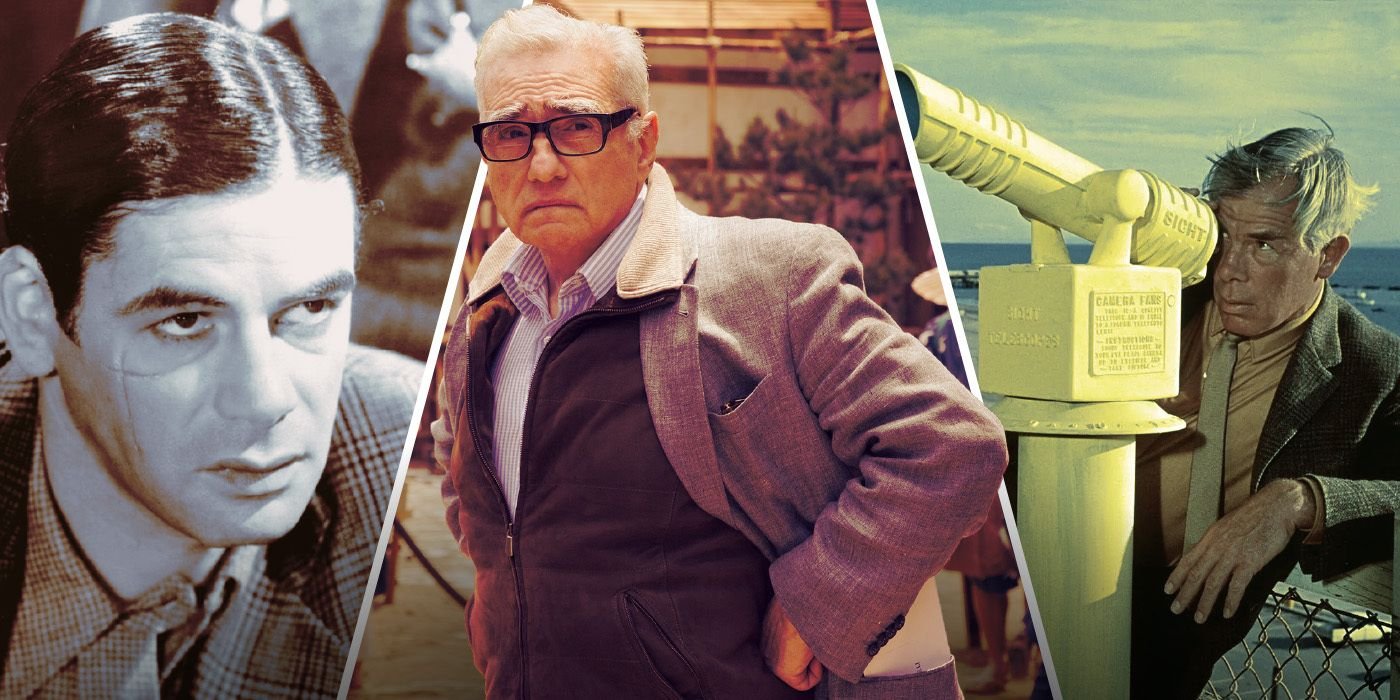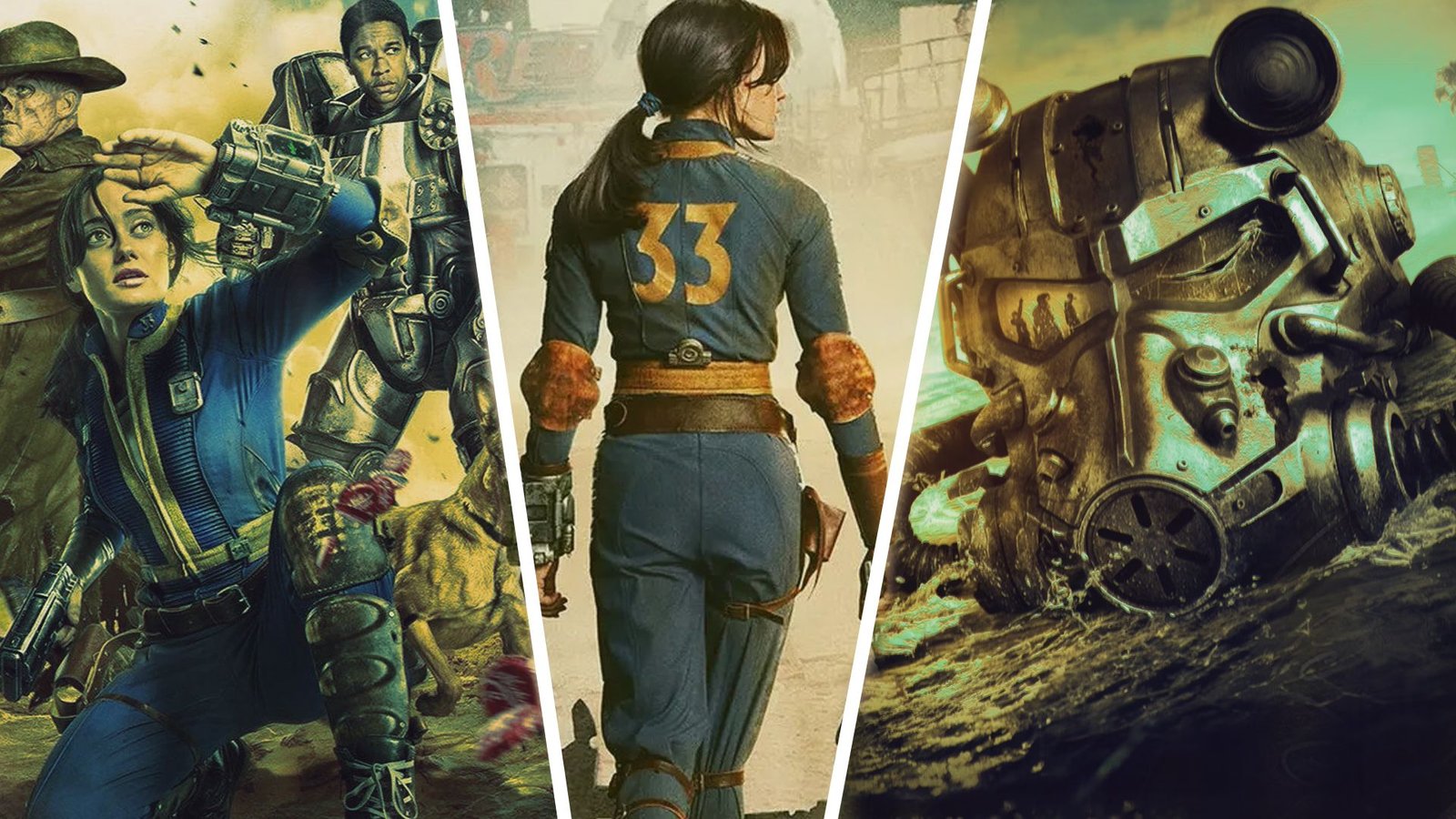No Hollywood figure is more qualified to give an opinion about gangster movies than Martin Scorsese. Francis Ford Copolla fans might disagree, but the legendary director only gave us one classic gangster tale (The Godfather trilogy), yet Scorsese has told many different stories, and always collected accolades for his efforts. Today, Goodfellas, Mean Streets, The Departed, Casino, and The Irishman rank high in every list of the greatest crime movies of all time. Additionally, Boardwalk Empire — which he executive produced and directed the pilot for — is one of the finest TV shows ever made.
Normally, Scorsese experiments with various genres, but there is no doubt that his best work is seen whenever he chooses hoodlums as his main characters. During an interview with The Daily Beast back in 2010, Scorsese selected 15 films he considers the best in the genre. These big-screen productions influenced him to make movies the way he does, hence they are also ideal for aspiring filmmakers. In his own words:
Here are 15 gangster pictures that had a profound effect on me and the way I thought about crime and how to portray it on film. They excited me, provoked me, and in one way or another, they had the ring of truth.
15 The Public Enemy (1931)
The Public Enemy is the film that turned James Cagney from a Hollywood dreamer into a paparazzi magnet, and by just watching the first few minutes, one can easily tell why the Warner Bros. production is highly revered. The legendary actor plays the Prohibition Era bootlegger Tom Powers, a ruthless criminal with a wildly deluded level of sense of confidence. He is shown to be enjoying a great lawbreaking streak in the underworld until a new criminal outfit emerges and threatens to run him out of business. Though not a real character, Powers is partially based on Al Capone’s nemesis and boss of the Chicago North Side crime family, Earl J. “Hymie” Weiss.
Both Stylishly Violent and Disgustingly Violent
Bullets never stop flying in The Public Enemy, and there is plenty of pummeled flesh, just as genre fans like it. Overall, the film takes things a little too far compared to other productions that came after it. This is mainly because it was released just before the authorities began enforcing the Hollywood Production Code. A scene where Cagney smashes a grapefruit in actress Mae Clark’s face was criticized at the time, and is still considered unnecessary to this day.
Still, the film helped set standards for Scorsese when it came to quality. “I will never forget watching William A. Wellman’s The Public Enemy with Jimmy Cagney when I was 10 years old …in a theater on a re-release,” he told VOA. “The brutal honesty of that film, the ‘street’ honesty of it, always stayed with me and that’s a mark I always aim toward.” And Scorsese isn’t the only major filmmaker or showrunner who likes the movie either. The Sopranos creator David Chase also included it as a pop culture reference in the show. In the Season 3 episode, “Proshai, Livushka” Tony Soprano becomes overwhelmed with emotion while watching the movie. Buy or Rent The Public Enemy on Prime Video.
14 Touchez pas au Grisbi (1954)
“One last job!” This is the lie gangsters always tell themselves. They often have dreams of making one big score and then retiring to avoid the typical jail-or-death fate that befalls their counterparts. As expected, events never play out like that. Take Touchez pas au Grisbi (translated to Don’t Touch the Loot), as an example. In it, a Parisian gangster named Max (Jean Gabin) — abetted by co-gangster, Riton (René Dary) — pulls off a mega-heist that will allow him to live opulent lives till their sunset years. Instead of keeping the information to himself, Max tells his loose-lipped lover, Josy (Jeanne Moreau), all about the score. Little does he know that Josy is secretly canoodling with rival gangster Angelo (Lino Ventura). Angelo thus kidnaps Riton and demands the loot, or else there will be dead bodies.
A Lesser Focus on Crime Mechanics
Released as Grisbi in the United States and Honor Among Thieves in the United Kingdom, the film combines relatable themes like age, love, friendship, and missed opportunities with usual mob elements like greed, betrayal, violence, fear, and rivalry. Most importantly, the gangster flick focuses on characterization more than crime mechanics, which is something Scorsese does a lot in his work. The heist itself is never shown. It’s only hinted at via a newspaper article. Such an approach is evident in Goodfellas, where the Lufthansa heist is never shown either.
Because of this angle, audiences end up caring more about the characters as well as the actors. Jean Gabin, whose career had been on the decline, ended up experiencing a resurgence because of his work in the film. Scorsese also sees this project as slightly similar to his other recent work. In his Letterboxd profile, he lists the French film as an influence on The Irishman.
Up until the time of Touchez pas au Grisbi’s release, most French gangster films had relied on the same template used in Hollywood movies. They were highly stylized and were highly sordid. Here, everything is toned down, hence there is a general sense of realism. By carving its path, the film created a new skeleton for the genre in France. Additionally, the French flick is noted for its catchy harmonica theme. The following year, it would become a chart-topping single in France. Stream Touchez Pas au Grisbi on Kanopy.
13 The Roaring Twenties (1939)
The Roaring Twenties is one of the more truthful gangster movies, as it’s based on events documented in the non-fiction book, The World Moves On by investigative journalist Mark Hellinger, who dug into the lives of many miscreants and big-time players in the ‘20s. The film’s central character is a military veteran named Eddie (Cagney). Once he returns home from World War I, he finds it hard to get a job. When the government begins enforcing prohibition laws, he experiences a light bulb moment and begins trading in liquor. He becomes wildly successful, only for one of his employees to trigger his downfall.
The Link Between the Economy and Crime
The Raoul Walsh film doesn’t just tell a beautiful story, it educates audiences about the link between crime and the state of the economy. The film spans the entire chaotic decade, starting with the conclusion of World War I into Prohibition and all the way to the Great Depression and the Wall Street crash. Through rich dialogue, the gangsters go into detail about their motivations, explaining how their actions are triggered by the state of the nation. This way, they trigger sympathy from any viewer who has ever hit rock bottom. The Roaring Twenties also has a documentary feel, as it constantly cuts to newsreel footage and quotes real-life figures. However, most of the key characters are fictional.
Here, audiences also get to see the final collaboration between James Cagney and Humphrey Bogart. The two had previously starred together in The Oklahoma Kid and Angels With Dirty Faces. This truly is a gangster film of the first order and one of the actors’ crowning achievements. Buy or Rent The Roaring Twenties on Prime Video.
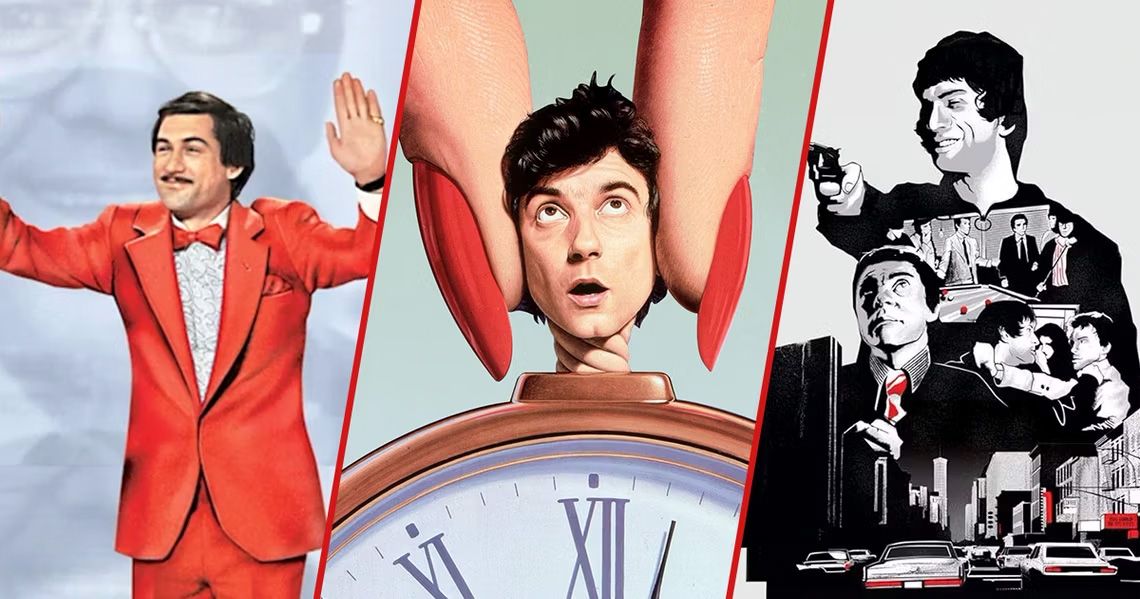
10 Best Martin Scorsese Movies That Were Snubbed for Best Picture, Ranked
Martin Scorsese has been richly awarded throughout his career, but it took quite some time before the Academy Awards recognized his talent.
12 Night and the City (1950)
Based on Gerald Kersh’s similarly titled novel, Night and the City revolves around American gangster Harry Fabian (Richard Widmark) as he navigates the London underworld. He longs for a life of wine and women, so he tries looking for other gigs while maintaining his current job as a club tout. His job involves tricking tourists into entering his boss’ club, assuring them they’ll have the best nights of their lives, only for them to experience the worst service. Soon, he becomes close to his boss’ wife, who is also looking to end her marriage, and their friendship eventually becomes costly for them.
A Scorsese Remake Almost Happened
A Night and the City remake is one of the movies Scorsese almost directed. In the book Scorsese on Scorsese, the director revealed that novelist Richard Price wrote a remake script for him. However, Scorsese was skeptical about making remakes, so he decided to make The Color of Money instead, with Price as the screenwriter. Still, the director acknowledged the influence the film had on him. He said:
“This was an important film for me, in terms of the background for Mean Streets. There’s a good sense of emotional violence in the film. Richard Widmark is a hustler, panicked, desperate, running all night — like Charlie in Mean Streets. And he winds up ruined, like Charlie — doom written on his face.”
There is no doubt that a Scorsese remake would have been brilliant. But he already had a similar movie in his portfolio, so declining the offer made sense. Still, any genre buff would be advised to watch the British film as it has some of the best cinematography of the era, portraying a dark and decaying side of London that is never seen on travel vlogs. Most importantly, it has one of the best antiheroes of all time. Stream Night and the City on The Criterion Channel.
11 Blood Money (1933)
In Blood Money, disreputable bail bondsman Bill Bailey (George Bancroft) controls a decent portion of gangsters and the political elite in Los Angeles. Unfortunately, he starts to lose his way when he falls for Elaine, a young and wealthy socialite. It turns out Elaine is also in love with a bank robber. When Bailey channels all his efforts into pursuing her, he ends up getting caught in a web of brutality, perversion, kleptomania, racketeering, and backstabbing.
The Wildest Love Interest in Cinema
Bailey is neither likable nor detestable in Blood Money. The honor of the most interesting character goes to Elaine. She insists that she wants “a man who’s my master! Who would shoot the first man who looks at me!” Bailey thus spends his time in the movie trying to be macho, but he never quite becomes what Elaine is looking for. That’s, perhaps, why audiences are treated to the most bizarre ending.
In the climax, Elaine bumps into a woman who informs her that she has just been assaulted by a man who had put up a newspaper ad looking for an art model. Instead of feeling sorry for her, Elaine grabs the paper and runs into the room where the man is, implying he is the kind of person she always wanted.
Elaine will remind Scorsese fans of Ginger from Casino. Both women are too wild for their own good, and any man who tries to change them ends up looking silly. Likewise, Bailey is like Ace Rothstein. Both men’s lives are shown to be going well until they fall for the wrong woman. And they have no one to blame but themselves. Blood Money is currently not available on streaming.
10 White Heat (1949)
The toughest of gangsters have weaknesses too, and in White Heat, crime boss Arthur “Cody” Jarrett (Cagney) suffers from the Oedipus complex. He is totally in love with his mother, Ma, and anyone who says something negative about her gets a bullet in the lungs. At some point, he gets captured, and even though he doesn’t yell “I want my mama!” like the unnamed inmate from The Shawshank Redemption, he becomes distressed.
The police take this opportunity to get to Cody’s head, so they plant a mole in his cell. When news reaches Cody about Ma’s death, he breaks free with the undercover agent. This proves to be the ideal outcome for the police, as they end up learning everything about his organization.
Obvious Inspirations… and a Deranged Gangster
Few fictional gangsters come close to Cody in terms of pure maliciousness. It’s not exactly his fault, since he is troubled by unexplained recurring migraines, which cause him to develop ‘homicidal psychosis’ with time. He, therefore, murders people with a smile.
White Heat also works because it borrows heavily and creatively from various sources. According to the American Film Institute, it was meant to be about the “public enemy era” gangster Ma Barker, who had four criminal sons. Ma Barker thus became Ma, and the four sons became the composite character, Arthur “Cody” Jarrett. The story also reworks many elements from Cagney’s previous works. In The Public Enemy, Cagney smashes a grapefruit into actress Mae Clarke’s face, and in White Heat, he kicks actress Virginia Mayo off her seat. Cody also has a prison breakdown, just like Cagney’s character in Each Dawn I Die. Buy or Rent White Heat on Apple TV.
9 Pete Kelly’s Blues (1955)
In Pete Kelly’s Blues, jazz musician Pete Kelly (Jack Webb) gets the dream gig that every musician of the 1920s dreams of — a contract to perform every night at one of the city’s most frequented speakeasies. Unfortunately, his joy is shortlived since the crime boss Fran McCarg (Edmond O’Brien) plans on investing in the local music scene. He soon informs Pete that he will need him to submit a portion of the band’s earnings every week. Well, Pete and his bandmates choose to resist.
One of Scorsese’s Early Favorites
Martin Scorsese didn’t just come to appreciate Pete Kelly’s Blues in his adulthood. He loved it ever since he was a child. During an interview with The New Yorker, he recalled that he was 13 when the movie was released, and he followed it from one theater to the other simply because he couldn’t get enough of it. Some of its elements can be seen in the director’s ‘70s film, New York, New York.
Jack Webb impresses as both the director and the lead actor, but it’s Peggy Lee who steals the show in her role as McCarg’s moll, Rose. Even though she is a wild alcoholic, the mobster forces Kelly to give her a job. She lights up every scene with humor, wit, and carelessness, hence providing some much-needed comedic elements to the film. Buy or Rent Pete Kelly’s Blues on Prime Video.
8 Scarface (1932)
Audiences are more familiar with Brian De Palma’s Scarface starring Al Pacino, but the older one is equally good. The film follows Italian immigrant hoodlum Antonio “Tony” Camonte (Paul Muni) as he uses violence to climb Chicago’s gangland ladder. He also spends his energy pursuing the Don’s mistress while his sister woos his hitman. The film is adapted from the 1929 novel by Armitage Trail, which itself is based on the life of Al Capone. In what is an undisguised tie to Capone’s life, a fictionalized version of the Saint Valentine’s Day Massacre also appears in the movie.
The Best Capone “Biopic”
Fans might be conflicted about which the best Al Capone movie is. Many might argue it’s The Untouchables, but Scarface makes a stronger case for itself since it captures everything about the Chicago Don’s life and personality. From his thirst for publicity to the scar on his face, the film showcases it all while still refusing to acknowledge that the main character is Alphonse. Additionally, it has stronger ties to Capone himself. According to screenwriter Ben Hecht’s autobiography, A Child of the Century, Capone sent two men to audit the script to ensure it had no damaging information.
Scorsese’s love for the film is clear, so much so that he almost made a remake. Far Out Magazine reports that the filmmaker almost made the movie with Robert DeNiro, but the gig ultimately went to Brian DePalma and Al Pacino. For now, cinephiles can only imagine how that would have turned out. Stream Scarface on Apple TV.
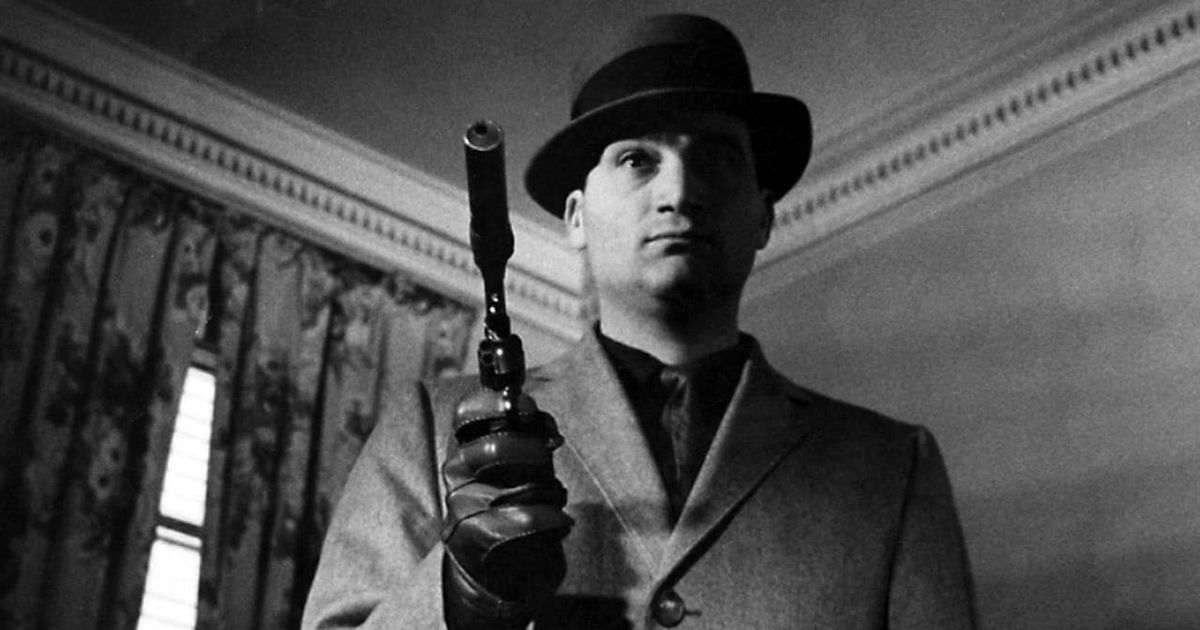


10 Underrated 1960s Gangster Movies
The 1960s birthed some of the greatest gangster movies of all time, and a lot of them continue to fly under the radar.
7 Force of Evil (1948)
In Force of Evil, John Garfield stars as Joe Morse, a lawyer seeking to become as rich as possible, in whichever way possible. He wants $10,000 suits and amuse-bouche meals at all times. It, therefore, comes as no surprise when he begins working for a mobster named Tucker, who plans to consolidate and establish a monopoly on the numbers racket in New York City. To do so, he also needs to absorb many other criminal organizations, but that proves to be a problem because one of these outfits is headed by Morse’s estranged brother, Leo.
Condemnation of Greed
A deep, misanthropic film about the culture of capitalism and materialism in America, Force of Evil entertains from start to finish. It also urges viewers to be a lot nicer than they are. Its edgy themes make sense since it was directed by Abraham Polonsky, a known Communist who found himself on the Hollywood Blacklist because of his beliefs. 20 years would pass before he was allowed to make another movie.
The film’s Blu-ray release has a special introduction by Martin Scorsese. “I came across Force of Evil on TV when I was 13”, he says. “And it changed my life.” It’s quite impressive that the filmmaker was able to understand the film at such a young age, given how complex it is. But that’s why he is one of the greatest of all time. Stream Force of Evil on The Roku Channel.
6 The Phenix City Story (1955)
The Phenix City Story depicts the real-life assassination of Alabama lawyer Albert Patterson, who was killed shortly after earning the Democratic candidate’s nomination for State Attorney General. The film plays fast and loose with facts for dramatization purposes. In it, Patterson’s assassination is sanctioned by a local mob boss named Rhett Tanner, yet such a character never existed.
No Glorifying the Mob
Most gangster movies celebrate mobsters or leave audiences to make up their own minds. The Phenix City Story hardly strides that path. Its stance is the same as that of the people of Alabama in the ‘50s — mobsters are devils, and they need to be locked up. Events play out like those of an Apartheid or Holocaust movie. Many people suffer and when Patterson gets murdered, the public is left with no other choice but to revolt. There are plenty of powerful monologues too, most of which are from political rallies. Overall, this is a film about morality and humanity. Even though it’s defined by melancholy, its consolation ending leaves everyone with a smile. Buy or Rent The Phenix City Story on Apple TV.
5 Murder by Contract (1958)
Sometimes money doesn’t come quickly enough, and when Claude (Vince Edwards) grows tired of saving to buy a $28,000 house, he decides to become an assassin for hire. After proving himself with a few hits, the Murder by Contract character becomes an in-demand contract killer, but when he is hired to kill a woman who is meant to testify in a trial, he begins suffering from a crisis of conscience. Angry, his employer puts a hit on him.
Still Aging Well
In the current social media world, Murder by Contract is even more relevant. There is something relatable about a man who is tempted to do ill to get what those around him are flaunting. And a plot where an assassin is struggling to kill a woman who isn’t even hiding (she stays in her house for most of the proceedings) is likely to resonate with modern audiences.
Better yet, if it wasn’t for the gritty production, the world would probably never have gotten to see the psychotic Robert DeNiro character Travis Bickle. Speaking about the film, Scorsese noted that “the spareness, the single-mindedness of the killer (played by Vince Edwards), the ritualized quality of his preparation and his actions… it haunted me and came directly to mind when I made Taxi Driver.” Murder by Contract is currently unavailable on streaming.
4 Al Capone (1959)
Al Capone tells the story of the legendary Prohibition Era gangster once again, and it remains factual for most of its 100-minute running time. However, the Capone family wasn’t happy about it. The mobster’s sister, Mae Capone, sued the studio for failing to secure permission from her. She lost the suit, but this didn’t stop her quest to keep “this thing of ours” a secret. She later sued the producers of The Untouchables TV show but lost that suit as well.
Same Old Capone Adventures… But Interesting Nonetheless
The film doesn’t tell any story that genre fans haven’t heard before, but it’s a Capone story anyway, so it remains interesting. Besides that, Rod Steiger, once described as one of Hollywood’s most charismatic stars, impresses in the lead role. For his hard work, he earned a nomination for the Laurel Award for Best Male Dramatic Performance.
Scorsese’s love for the film is likely tied to his love for the bootlegger in general. He made sure to include him in Boardwalk Empire and selected an actor (Stephen Graham) who mirrored Steiger in style and expression. Sadly, in that particular show, the full Capone story is never told. Buy or Rent Al Capone on Prime Video.
3 Le Doulos (1962)
Le Doulos’ central character, Maurice (Serge Reggiani) is just like every other of his kind. After getting released from prison, he starts planning other robberies. His friend, Silien, proves to be a great accomplice, providing him with all the necessary tools. Unknown to him, Silien might just be an informant. Within no time, he finds himself behind bars, and this time, he vows not to stay in the slammer quietly.
An Endless Sense of Urgency
Great films hardly ever slow down, and the same can be said of this masterpiece. There is a never-ending sense of urgency, and with that comes frantic pacing and plenty of silly mistakes from the characters. These decisions make them all the more human, and worth caring for.
While filming The Irishman, Scorsese screened Le Doulos to his director of photography, Rodrigo Prieto. During an on-stage conversation with Spike Lee, he said, “For the tone of the movie, I wanted it to be contemplative, and it had to be an intimate epic. So I showed a couple of Jean-Pierre Melville films. I showed Le Doulos and Le deuxième soufflé. It’s a very different world, but I like the understatement of it.” Speaking to Beckerfilms, Tarantino admitted that the French flick’s screenplay gave him a couple of ideas while he was writing Reservoir Dogs as well. Stream Le Doulos, or The Informer, on The Criterion Channel.
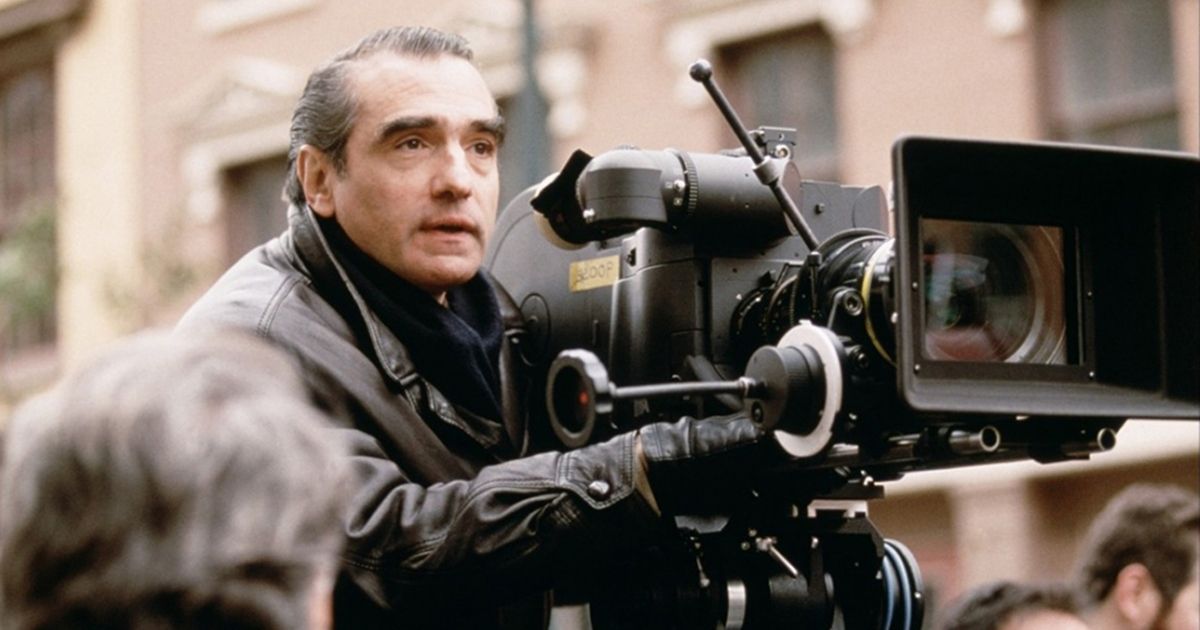


Best Martin Scorsese Films, Ranked
From Taxi Driver to The Irishman, here’s a look at the best movies from Martin Scorsese, one of the greatest filmmakers to ever live.
2 Mafioso (1962)
In Mafioso, vehicle assembly factory worker Antonio (Alberto Sordi), visits his hometown in Sicily, after years of working in Milan. There, he comes up with a quid pro quo agreement with the local Don. The mob boss vows to help with a land dispute in exchange for him carrying out a mafia hit in the United States. Without informing his wife, he boards a boat and heads overseas.
Great Dialogue and Succulent Scenery
Mafioso is an aesthetically pleasing film, and most of its scenes will remind genre fans of the time The Godfather’s Michael Corleone went to Sicily to escape the heat after killing Captain McClusky and Virgil “The Turk” Solozzo. The images are like perfect paintings, laying bare the region’s underdevelopment while still emphasizing the joy of nature and trees.
Besides that, the dialogue is quite memorable. “Mama commands and the baby obeys,” the Don says to Antonio during one of their conversations, reminding him that if he ever thinks of running back to Milan, one of the cars he is assembling might just blow up with him underneath it. Stream Mafioso on The Criterion Channel.
1 Point Blank (1967)
Based on Donald Westlake’s 1963 crime noir pulp book The Hunter, Point Blank follows two crooks who fall out after robbing a courier on the grounds of the now-defunct Alcatraz. One shoots the other and leaves him for dead. Luckily, the man didn’t die. He recovers with vengeance on his mind. However, while chasing after the person who betrayed him, he ends up uncovering shocking details that make him question whether he is on the right path in life.
As Artsy as Gangster Movies Come
According to the Gary Line of Fransisco, this was the first film to ever be filmed in Alcatraz. The cinematography is wonderful, and the decision to film many scenes monochromatically helps amplify the gloomy mood. Additionally, Point Blank uses a fractured timeline, sparing the audience the burden of keeping up with its bulky story by the minute. Furthermore, there are nouvelle vague elements, creating a general stylish feel.
Scorsese isn’t the only director who loves Point Blank.Steven Soderbergh once confessed that it’s “a film that I’ve stolen from so many times. Quentin Tarantino also revealed that it was one of the movies he adored the most when he was younger. Stream Point Blank on The Criterion Channel.


